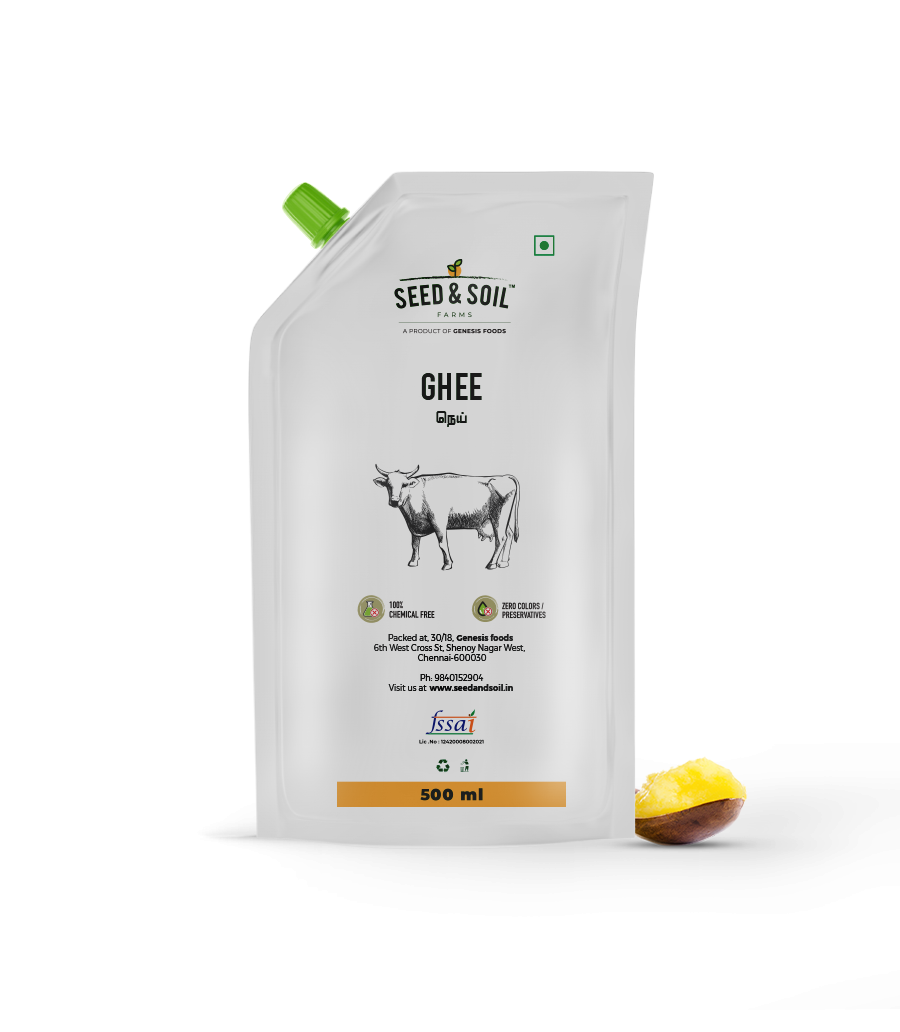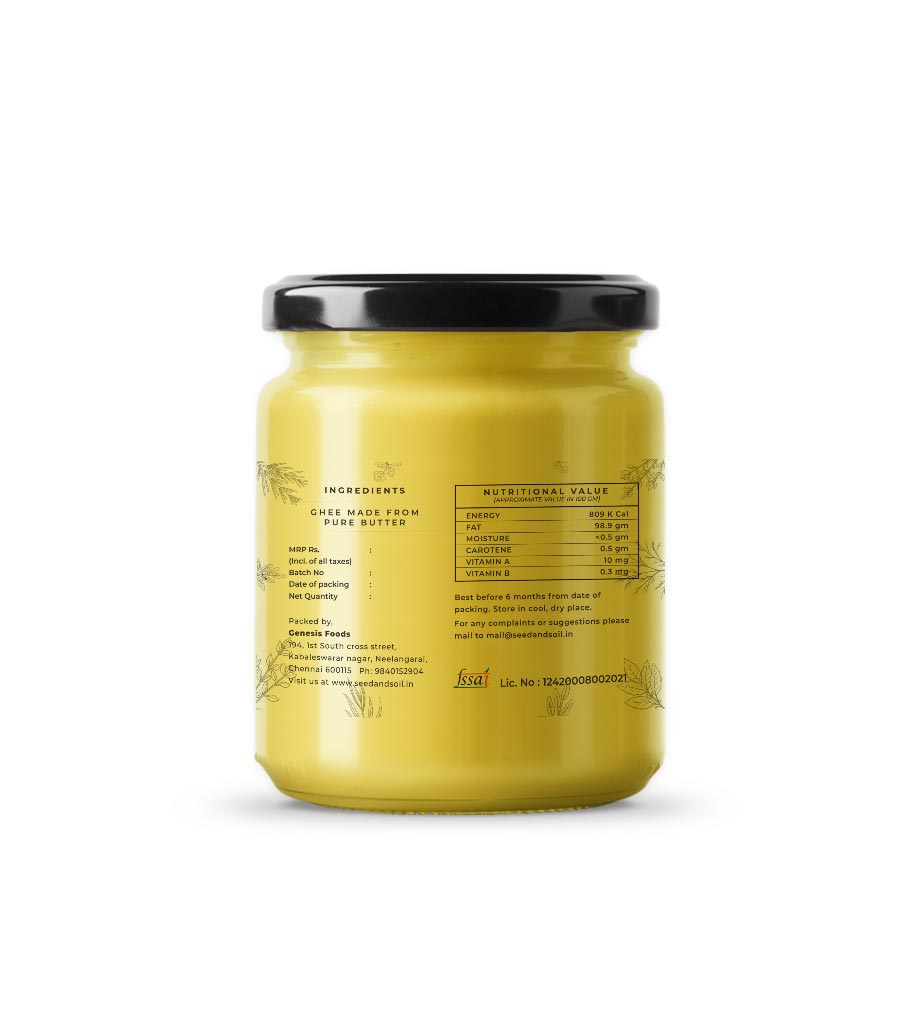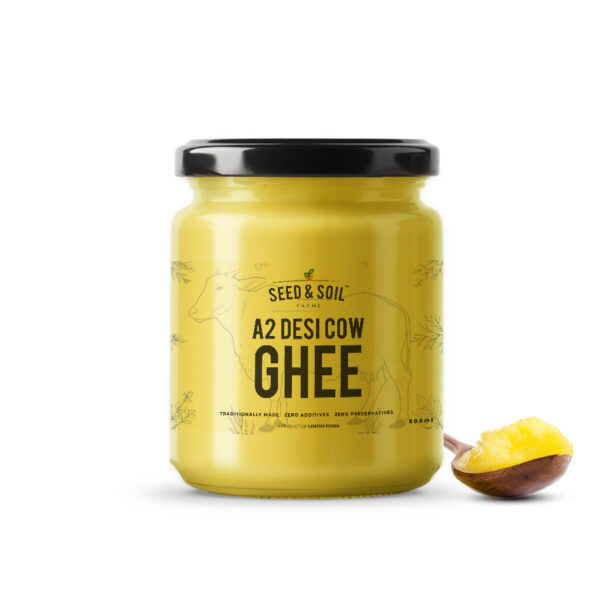
How is ghee made?
Fresh milk from healthy country cows is collected and boiled at a moderate temperature and cooled. A few drops of curd is added to this milk and left at room temperature overnight.
The milk turns into curd the next day morning. The curd is then transferred to another container and whipped in a wooden hand masher. This method creates butter and buttermilk. Butter is carefully taken out of the vessel and cleaned with cold water.
The butter is transferred into another vessel and heated till it melts and turns out to be brownish liquid called ghee.
Health Benefits of Ghee:
- Ghee has healthy fatty acids and is rich in lauric acid, which is an antimicrobial and antifungal element. Ghee is healthy for nursing mothers.
- Besides having dietary fats, ghee contains vitamins A, D, E, and K. Consuming ghee regularly will improve mental and physical strength.
- 100 ml of ghee consists of almost 99.7% grams of fat. It contains healthy fat, which adds good cholesterol to the body.
- Ghee strengthens the digestive system. It also reduces the chances of cancer and ulcer. A spoonful of ghee added to the meal improves gut health and relieves constipation.
- The vitamin K in ghee helps in calcium absorption, which in turn prevents tooth decay and atherosclerosis.
- The DHA Omega 3 fatty acid present in ghee improves brain function, slows down the aging process, reduces inflammation, and boosts the immune system.





Reviews
There are no reviews yet.